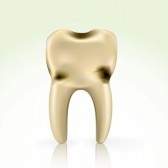
Cavity 101
No one likes cavities, but everyone likes the foods that help create them. Funny humans…
Cavities are holes which are found in the teeth that are caused by tooth decay. This is the result of saliva mixing with food particles and bacteria in the mouth. There are hundreds of bacteria in our mouths found in the saliva. When they mix, they form a sticky substance called plaque. With time, plaque hardens and covers the crown of the tooth. If left alone, the plaque then turns into tartar. After this, the bacteria present converts sugar in to an acid. It is this acid that makes the matter worse by dissolving a hole into the tooth. The tooth finally decays. This process is gradual and occurs in stages. The earlier you realize what is going on the better.
The most exposed parts of the tooth to be affected with cavities are the fissures and the pits. This is mainly because they have a relatively higher saliva and bacterial content than any other part of the tooth. Other conditions that accelerate tooth decay include a dry mouth. We also have genetic causes of cavities such as tooth size and shape. There are those that will accommodate the saliva and bacteria in high amounts resulting in higher chances of one being a victim of cavities. Other genetic factors are tooth eruption and tooth position in the mouth.
It’s possible to treat and contain cavities, also referred to as dental caries. The steps followed will however depend on the extent to which the tooth has been affected. If still in the primary stages, it can be done by just regular brushing of the tooth. You also have to part ways with high sugar content foods like sweets. The kids have to be on a balanced and steady diet. This is called the prevention stage. Beyond this level, the experts will have to step in.
Remineralization is the next stage. Here, calcium and fluoride can be used to treat the affected tooth. It aims at re-hardening of the tooth, making it resistant to cavities. The final stage is the restoration one. As the name depicts, here the dentist will bring a tooth to its former stage after the harm has been done. In this case, if the cavity is small, then it’s properly washed with a special liquid. Then it is filled with a material comprising of silver amalgamate. Of course, each case it different, so the necessary procedures will vary.
If you are near Dallas, have a cavity and need our expert Irving dentistry services at Aava Dental, then please contact us today.






